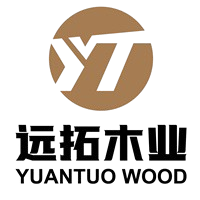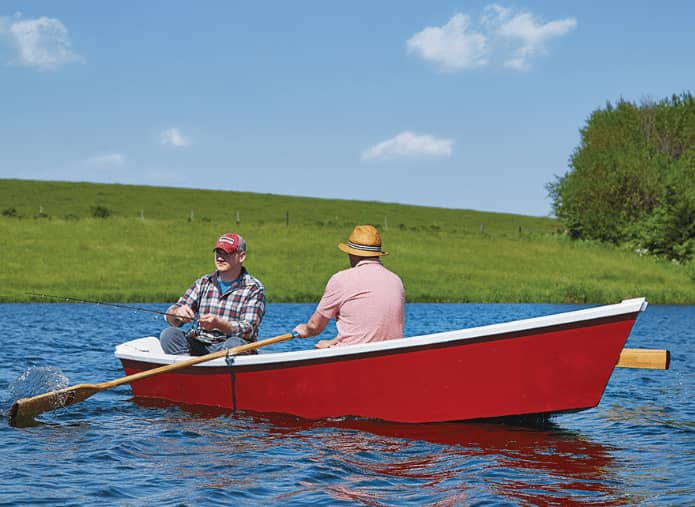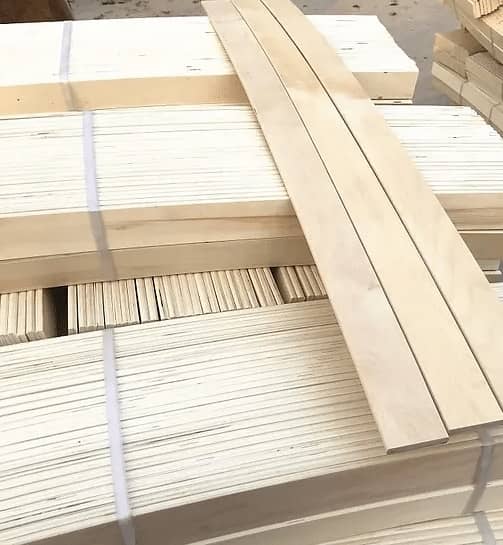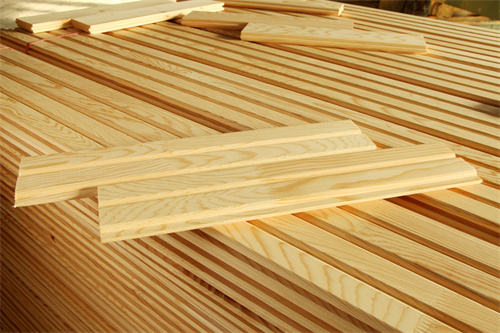Introduzione: Navigare nelle acque del compensato resistente all'acqua
Quando si tratta di progetti esposti alle intemperie o ad ambienti ad alta umidità, la scelta del compensato giusto può fare la differenza tra la durata nel tempo e il deterioramento prematuro. Due contendenti sono spesso in cima alla lista: marino compensato e compensato per esterni. Entrambi offrono resistenza all'umidità, ma le loro proprietà uniche, i processi di produzione e le applicazioni ideali li distinguono.
Questa guida completa approfondisce le compensato marino vs. compensato per esterni e vi forniremo le conoscenze necessarie per fare una scelta consapevole per il vostro prossimo progetto. Esploreremo il loro funzionamento interno, analizzeremo i loro punti di forza e di debolezza e sveleremo le migliori applicazioni per ciascuno di essi, assicurando che il vostro progetto superi qualsiasi tempesta.
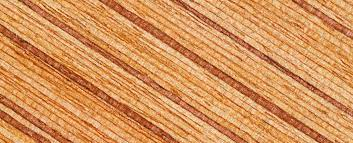
Capire i contendenti: Compensato marino e compensato per esterni
Che cos'è il compensato?
Prima di addentrarci nelle specifiche del compensato marino e per esterni, stabiliamo una base comune comprendendo il materiale di base: il compensato. Il compensato è un prodotto in legno ingegnerizzato costruito stratificando sottili fogli di impiallacciatura di legno, detti strati, con un adesivo. Questi strati sono generalmente disposti perpendicolarmente l'uno all'altro, creando una struttura a grana incrociata che aumenta la forza, la stabilità e la resistenza alla deformazione o alla torsione. Il numero di strati utilizzati può variare a seconda dello spessore e della resistenza desiderati del compensato.
Compensato marino: Il campione della marineria
Il compensato marino, come suggerisce il nome, è specificamente progettato per resistere alle condizioni difficili che si incontrano nella costruzione di imbarcazioni e in altre applicazioni marine. È realizzato con la massima precisione e durata, utilizzando solo materiali di altissima qualità e processi produttivi rigorosi. Ogni aspetto del compensato marino, dalla selezione delle specie legnose al tipo di adesivo utilizzato, è scelto meticolosamente per garantire la sua capacità di resistere all'esposizione prolungata all'umidità, all'umidità e agli effetti corrosivi dell'acqua salata.
Caratteristiche principali del compensato marino:
- Specie: Costruito esclusivamente con impiallacciature di legno duro e resistente, in genere abete Douglas o larice occidentale, noti per la loro naturale resistenza all'umidità, alla marcescenza e al decadimento. Queste specie vengono scelte anche per il loro rapporto resistenza-peso, assicurando che il compensato marino sia allo stesso tempo forte e leggero.
- Costruzione del nucleo: Utilizza un'anima priva di vuoti, cioè completamente priva di spazi vuoti all'interno degli strati. Questa struttura ad anima piena ne aumenta la forza, la stabilità dimensionale e la resistenza alla penetrazione dell'umidità. L'assenza di vuoti impedisce all'acqua di rimanere intrappolata nel compensato, con il rischio di marciume o delaminazione.
- Adesivo: Incollato con adesivi impermeabili, in genere di tipo I o II, specificamente formulati per resistere all'esposizione prolungata all'umidità, all'umidità e a temperature estreme senza delaminare o perdere forza. Questi adesivi sono anche resistenti agli effetti corrosivi dell'acqua salata, rendendo il compensato marino adatto all'uso in ambienti marini.
- Qualità del viso: È caratterizzato da una superficie liscia e levigata, spesso con uno o entrambi i lati classificati per l'aspetto. Questa superficie liscia è ideale per essere dipinta, verniciata o laminata, migliorando il suo aspetto estetico e proteggendola ulteriormente dagli agenti atmosferici. La superficie liscia facilita inoltre l'applicazione della vetroresina o di altri rivestimenti comunemente utilizzati nella costruzione di imbarcazioni.
Compensato per esterni: Il versatile tuttofare
Il compensato per esterni, pur non essendo specificamente progettato per gli ambienti marini, offre un'eccellente resistenza all'umidità ed è una scelta popolare per un'ampia gamma di applicazioni esterne e di costruzione. Si tratta di un'opzione più economica rispetto al compensato marino, che lo rende adatto a progetti in cui il rapporto costo-efficacia è una preoccupazione primaria. Anche se non possiede lo stesso livello di resistenza all'umidità del compensato marino, il compensato per esterni è comunque una scelta affidabile e duratura per molti progetti esterni.
Caratteristiche principali del compensato per esterni:
- Specie: Può essere prodotto con impiallacciature sia di legno tenero che di legno duro; le specie più comuni sono l'abete di Douglas, il pino, l'abete rosso e il pino giallo meridionale. La scelta delle specie legnose può influire sulla forza, sulla durata e sulla resistenza all'umidità del compensato.
- Costruzione del nucleo: Possono avere un'anima priva di vuoti o un'anima impiallacciata, a seconda dell'applicazione prevista e della qualità. Le anime prive di vuoti offrono maggiore forza e resistenza all'umidità, mentre le anime impiallacciate sono più leggere ed economiche. Il tipo di costruzione dell'anima influisce sul peso, sulla resistenza e sul costo del compensato.
- Adesivo: Incollati con adesivi per esterni, in genere resistenti all'umidità ma non necessariamente impermeabili. Questi adesivi sono progettati per resistere all'esposizione occasionale all'umidità, ma potrebbero non essere adatti all'immersione prolungata o all'umidità estrema. Il livello di resistenza all'umidità varia a seconda dell'adesivo specifico utilizzato.
- Qualità del viso: È disponibile in diverse classi di faccia, da segata grezza a levigata, a seconda dell'uso previsto e dei requisiti estetici. Il tipo di faccia influisce sull'aspetto del compensato e sulla sua idoneità alla finitura.
Compensato marino vs. compensato per esterni: Una ripartizione dettagliata
Tabella 1: Differenze chiave tra compensato marino e compensato per esterni
| Caratteristica | compensato marino | Compensato per esterni |
|---|---|---|
| Specie di legno | Legni duri resistenti (abete di Douglas, larice occidentale) | Conifere e latifoglie (abete di Douglas, pino, abete rosso) |
| Costruzione del nucleo | Sempre privo di nullità | Anima senza vuoti o impiallacciata |
| Adesivo | Tipo I o Tipo II impermeabile di tipo marino | Grado esterno, resistente all'umidità (non sempre impermeabile) |
| Qualità del viso | Liscio, levigato, spesso classificato per l'aspetto estetico | Varia da grezzo a levigato |
| Resistenza all'umidità | Eccezionale, progettato per un'esposizione prolungata all'acqua e all'umidità | Buono, adatto all'esposizione occasionale all'umidità |
| Durability | Estremamente durevole, di lunga durata | Durevole, ma la durata di vita può variare a seconda dell'esposizione all'umidità |
| Costo | Più costoso | Più conveniente |
| Applicazioni tipiche | Costruzione di barche, pontili, mobili da esterno esposti all'acqua | Strutture esterne, rivestimenti, guaine, tetti |
Applicazioni: Dove ogni tipo di compensato eccelle
Applicazioni del compensato marino:
- Costruzione di barche: È lo standard di riferimento per scafi, ponti e componenti interni delle imbarcazioni, in quanto offre eccezionale robustezza, durata e resistenza ai danni dell'acqua. Il compensato marino è apprezzato sia dai costruttori di barche professionisti che dagli appassionati per la sua affidabilità e longevità in ambienti marini difficili.
- Banchine e moli: Resiste all'esposizione costante all'acqua, alla putrefazione, alla decadenza e alle infestazioni di pirati marini. La sua durata e resistenza agli elementi lo rendono il materiale ideale per la costruzione di moli, pontili e altre strutture sul lungomare.
- Mobili da esterno (alta umidità): Ideale per i mobili da esterno esposti a pioggia, umidità o a bordo piscina, per garantire prestazioni durature. Il compensato marino assicura che i mobili da esterno possano resistere alle condizioni climatiche mutevoli e all'uso frequente.
- Mobili e armadietti per il bagno: Crea vanity e armadietti resistenti all'umidità per bagni o altre aree ad alta umidità. La sua resistenza all'umidità, alla deformazione e alla muffa lo rende una scelta adatta per i mobili da bagno, garantendone la longevità e l'estetica.
Applicazioni del compensato per esterni:
- Rivestimento e guaina: Fornisce supporto strutturale e resistenza agli agenti atmosferici per le pareti esterne. Il compensato per esterni è una scelta popolare per le guaine e i rivestimenti grazie alla sua economicità, disponibilità e capacità di resistere a una moderata esposizione all'umidità.
- Coperture: Serve come base durevole per tegole o altri materiali di copertura. L'integrità strutturale e la resistenza all'umidità lo rendono adatto alle applicazioni di copertura, fornendo una base affidabile per tegole o altri materiali di copertura.
- Recinzione: Crea recinzioni robuste e resistenti agli agenti atmosferici. Il compensato per esterni viene comunemente utilizzato per i pannelli di recinzione, offrendo un equilibrio tra economicità, durata e resistenza agli agenti atmosferici.
- Strutture esterne (umidità limitata): Adatto per capannoni, casette o altre strutture esterne con esposizione limitata al contatto diretto con l'acqua. Il compensato per esterni può essere utilizzato per una varietà di strutture esterne, fornendo un'adeguata protezione dalle intemperie senza il costo superiore del compensato marino.
- Sottofondo: Fornisce una base stabile e resistente all'umidità per l'installazione di pavimenti. La sua stabilità strutturale e la resistenza all'umidità lo rendono un sottofondo adatto a vari tipi di pavimentazione, fornendo una superficie liscia e piana per la posa.
Fornitori a confronto: Navigare nel mercato del compensato
Tabella 2: Legno Yuantuo vs. altri fornitori di compensato - Un'analisi comparativa
| Fornitore | Posizione | Fascia di prezzo (per foglio - 4'x8'x1/2″) | Specialità |
|---|---|---|---|
| Yuantuo Wood | Cina | $45 – $120 | Specializzato in compensato marino e compensato per esterni di alta qualità, offre una gamma di specie legnose, spessori e dimensioni. Si concentra sulle pratiche forestali sostenibili e sui prezzi competitivi per gli ordini all'ingrosso. |
| Home Depot | STATI UNITI D'AMERICA | $30 – $90 | Ampia scelta di compensati, compresi quelli marini e per esterni, di varie marche. Sedi convenienti e possibilità di ordinare online. I prezzi possono variare a seconda della località e della disponibilità. |
| Lowe’s | STATI UNITI D'AMERICA | $28 – $85 | Simile a Home Depot, offre un'ampia scelta di compensati, compresi quelli marini e per esterni. Prezzi competitivi e frequenti promozioni commerciali. |
| Menards | STATI UNITI D'AMERICA | $25 – $80 | Rivenditore statunitense del Midwest con un'ampia scelta di materiali da costruzione, tra cui il compensato. Conosciuto per i prezzi competitivi e l'attenzione ai prodotti di valore. |
| Legnami locali | Variabile | $35 – $110 | Spesso hanno una selezione curata di compensati, compresi quelli speciali come il compensato marino. Possono offrire un servizio e un'esperienza personalizzati. I prezzi possono essere più alti rispetto ai grandi magazzini, ma la qualità e il servizio possono giustificare il sovrapprezzo. |
Nota: I prezzi sono approssimativi e possono variare in base alle specie legnose, alla qualità, allo spessore, alla domanda del mercato e alla posizione del fornitore. Si consiglia sempre di contattare direttamente i fornitori per conoscere i prezzi e la disponibilità più aggiornati.
Soppesare i pro e i contro: vantaggi e limiti
Tabella 3: Vantaggi e svantaggi del compensato marino
| Vantaggi | Svantaggi |
|---|---|
| Eccezionale resistenza all'umidità: Progettato per resistere all'esposizione prolungata all'acqua e all'umidità senza delaminare o marcire. | Costo più elevato: I materiali pregiati e i processi di produzione rendono il compensato marino più costoso di quello per esterni. |
| Resistenza e durata superiori: L'anima priva di vuoti e i legni duri durevoli garantiscono un'eccezionale robustezza e resistenza agli urti. | Disponibilità limitata: Potrebbe non essere così facilmente disponibile come il compensato per esterni, soprattutto nelle dimensioni standard o in tutti i depositi di legname. |
| Lunga durata di vita: Con una cura e una manutenzione adeguate, il compensato marino può durare per decenni, anche in ambienti difficili. | Eccessivo per alcune applicazioni: La sua eccezionale resistenza all'umidità può essere superflua per progetti con un'esposizione limitata all'acqua. |
| Finitura liscia e attraente: La superficie liscia e levigata è ideale per essere dipinta, verniciata o laminata, esaltandone l'estetica. | Peso: Può essere più pesante del compensato per esterni, il che può essere un problema per alcuni progetti. |
Tabella 4: Vantaggi e svantaggi del compensato per esterni
| Vantaggi | Svantaggi |
|---|---|
| Efficiente dal punto di vista dei costi: Più conveniente del compensato marino, rappresenta un'opzione economica per molti progetti. | Resistenza all'umidità inferiore: Pur essendo resistente all'umidità, non è progettato per l'immersione prolungata o l'umidità estrema come il compensato marino. |
| Ampia disponibilità: Sono facilmente reperibili in varie dimensioni, spessori e qualità presso la maggior parte dei negozi di legname e di articoli per la casa. | Qualità variabile: La qualità può variare a seconda del produttore, della specie legnosa e della qualità. |
| Versatilità: Adatto a un'ampia gamma di applicazioni per esterni e per l'edilizia in cui è importante la resistenza all'umidità. | Durata di vita più breve (in condizioni di bagnato): L'esposizione prolungata all'umidità può portare a delaminazione, marciume o decadimento. |
| Peso ridotto: Generalmente più leggero del compensato marino, è più facile da maneggiare e installare. | Superficie più ruvida (alcuni gradi): Alcuni gradi possono presentare una superficie più ruvida, che richiede una levigatura o una finitura supplementare per determinate applicazioni. |
Approfondimenti correlati: Approfondimento sulla selezione del compensato
- Comprendere i gradi del compensato: Sia il compensato marino che quello per esterni sono disponibili in diversi gradi, che indicano la qualità dell'impiallacciatura e l'aspetto della faccia. Le classi più alte hanno meno imperfezioni, come nodi o vuoti, e sono più adatte per applicazioni in cui l'aspetto è importante. Le classi inferiori sono più economiche ma possono presentare maggiori imperfezioni estetiche. La comprensione dei gradi del compensato è essenziale per scegliere il materiale giusto per l'applicazione e il budget previsti.
- Scegliere il giusto spessore: Lo spessore del compensato è fondamentale per l'integrità strutturale e la capacità di carico. Il compensato più spesso è più resistente e può coprire distanze maggiori senza cedimenti. Lo spessore appropriato dipende dall'applicazione specifica e dal carico previsto. La consultazione delle norme edilizie o la consulenza di ingegneri strutturali possono aiutare a determinare lo spessore appropriato per progetti specifici.
- Lavorare con il compensato: Il compensato è un materiale versatile che può essere tagliato, modellato e fissato come il legno massiccio. Tuttavia, è essenziale utilizzare gli strumenti e le tecniche giuste per evitare scheggiature o delaminazioni. L'uso di lame affilate, di guide per sega adeguate e di tecniche di serraggio appropriate può aiutare a ottenere tagli puliti e precisi.
- Finitura del compensato: Una finitura adeguata è essenziale per proteggere il compensato dall'umidità, dai danni dei raggi UV e dall'usura. La scelta della finitura giusta dipende dall'applicazione e dall'estetica desiderata. Pitture, mordenti, vernici e sigillanti possono essere utilizzati per proteggere e migliorare l'aspetto del compensato.
Perché scegliere il legno Yuantuo?
Noi di Yuantuo Wood non ci limitiamo a fornire compensato, ma garantiamo la massima tranquillità. Sappiamo che la scelta dei materiali giusti per il vostro progetto è fondamentale per il suo successo e la sua durata. Ecco perché i clienti più esigenti di tutto il mondo scelgono Yuantuo Wood per le loro esigenze di compensato:
- Qualità senza compromessi: Ci riforniamo solo dei migliori legni duri e teneri provenienti da foreste gestite in modo sostenibile, garantendo un compensato di altissima qualità che soddisfa le esigenze anche delle applicazioni più difficili. Il nostro impegno per la qualità è evidente in ogni foglio di compensato che produciamo.
- Produzione di precisione: I nostri impianti di produzione all'avanguardia e i rigorosi processi di controllo della qualità garantiscono una qualità costante, tagli precisi e un incollaggio superiore per un compensato che resiste alla prova del tempo. Utilizziamo tecniche di produzione avanzate e aderiamo a rigorosi standard di qualità per garantire che il nostro compensato soddisfi i più elevati standard industriali.
- Soluzioni su misura: Offriamo un'ampia gamma di opzioni di compensato, compresi i gradi marini ed esterni, in vari spessori, dimensioni e finiture per soddisfare le vostre specifiche esigenze di progetto. Il nostro team di esperti può collaborare con voi per individuare la soluzione di compensato ideale per le vostre esigenze specifiche.
- Pratiche sostenibili: Ci impegniamo a seguire pratiche forestali responsabili, a ridurre al minimo il nostro impatto ambientale e a garantire la salute a lungo termine delle nostre foreste. Crediamo nella conservazione del nostro pianeta per le generazioni future e ci sforziamo di ridurre al minimo la nostra impronta ambientale in tutte le nostre operazioni.
- Prezzi competitivi: Offriamo prezzi competitivi su tutti i nostri prodotti in compensato, garantendo un valore eccezionale per il vostro investimento. Crediamo che il compensato di alta qualità debba essere accessibile a tutti e ci sforziamo di offrire prezzi competitivi senza compromettere la qualità o la sostenibilità.
FAQ: Rispondere alle vostre domande sul compensato
1. Qual è la durata di vita del compensato marino rispetto al compensato per esterni?
Il compensato marino, grazie alla sua superiore resistenza all'umidità e alla sua durata, può durare per decenni, anche in ambienti marini difficili. L'uso di legni duri e resistenti, di anime prive di vuoti e di adesivi impermeabili contribuisce alla sua eccezionale durata. Il compensato per esterni, pur essendo resistente, ha una durata inferiore in condizioni di umidità costante. La sua durata può variare da 10 a 25 anni a seconda della gravità dell'esposizione e della manutenzione. Il tipo di specie legnosa, la struttura dell'anima e l'adesivo utilizzato possono influenzare la durata del compensato per esterni.
2. Posso usare il compensato per esterni per la costruzione di una barca?
Il compensato per esterni, pur offrendo resistenza all'umidità, non è consigliato per la costruzione di imbarcazioni. Gli adesivi impermeabili di qualità superiore, l'anima priva di vuoti e l'uso di legni duri resistenti rendono il compensato marino l'unica scelta affidabile per l'ambiente marino. La costante esposizione all'acqua, all'umidità e alle condizioni atmosferiche potenzialmente avverse richiede l'eccezionale resistenza all'umidità e la durata che solo il compensato marino è in grado di fornire.
3. Qual è il tipo di compensato migliore per i mobili da esterno?
Per i mobili da esterno esposti a pioggia o umidità occasionale, il compensato per esterni può essere una scelta adeguata ed economica. Tuttavia, per i mobili frequentemente esposti all'acqua, come i lettini a bordo piscina, il compensato marino è l'opzione migliore, in quanto garantisce prestazioni durature. La scelta tra compensato per esterni e compensato marino per i mobili da esterno dipende dal livello di esposizione all'umidità previsto e dalla durata di vita desiderata del mobile.
4. Qual è la differenza tra il compensato CDX e BC?
CDX e BC sono classi di compensato. Il CDX è un grado inferiore, tipicamente utilizzato per guaine, coperture o altre applicazioni in cui l'aspetto non è fondamentale. Può presentare più nodi, vuoti o altre imperfezioni estetiche. Il compensato BC ha una faccia più liscia ed è adatto a progetti in cui l'aspetto è importante, come armadi o mobili. L'impiallacciatura della faccia del compensato BC è di qualità superiore, con il risultato di una superficie più liscia ed esteticamente più gradevole.
5. Yuantuo Wood offre dimensioni o spessori di compensato personalizzati?
Sì, Yuantuo Wood offre dimensioni e spessori di compensato personalizzati per soddisfare i requisiti di progetti specifici. Contattate il nostro team di vendita per discutere le vostre esigenze e ricevere un preventivo personalizzato. Siamo consapevoli che alcuni progetti richiedono dimensioni o spessori specifici e siamo lieti di accogliere ordini personalizzati per soddisfare le vostre esatte specifiche.
Conclusione: Fare la scelta giusta per un'impressione duratura
La scelta tra compensato marino e compensato per esterni dipende in ultima analisi dalle esigenze specifiche del progetto, dal budget e dalla durata desiderata. Il compensato marino regna sovrano per la sua impareggiabile resistenza all'umidità e la sua durata, che lo rendono la scelta ideale per gli ambienti marini e per i progetti che richiedono prestazioni di lunga durata. Il compensato per esterni offre un'opzione più economica per i progetti in cui la resistenza all'umidità è importante ma non si prevede un'esposizione prolungata all'acqua.
Considerando attentamente i fattori descritti in questa guida, potrete scegliere con sicurezza il compensato giusto per il vostro prossimo progetto, garantendone il successo e la longevità.
